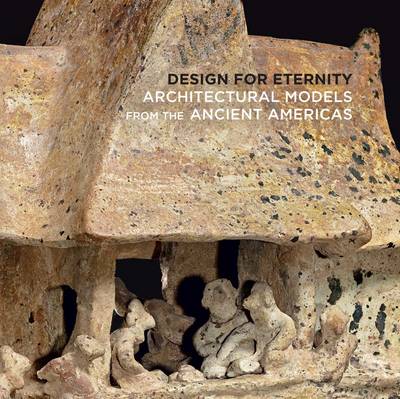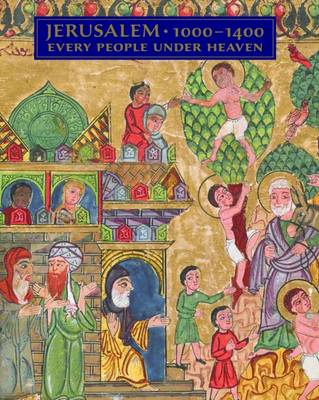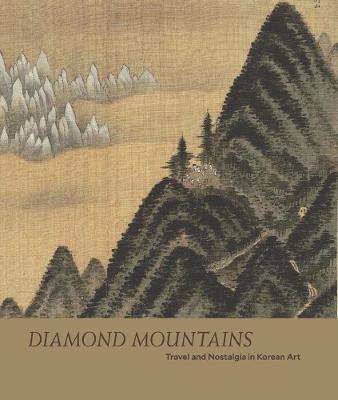Metropolitan Museum of Art (MAA) (YUP)
4 total works
Design for Eternity
by Joanne Pillsbury, Patricia Sarro, James Doyle, and Juliet Wiersema
Published 12 November 2015
From the first millennium B.C. until the arrival of Europeans in the 16th century, artists from across the ancient Americas created small-scale architectural effigies to be placed in the tombs of important individuals. These works in stone, ceramic, wood, and metal range from highly abstracted, minimalist representations of temples and houses to elaborate complexes populated with figures, conveying a rich sense of ancient ritual and daily life. Although described as models, these effigies were created not so much as reflections or prototypes of existing structures, but rather as critical, conceptual components of funerary practice and beliefs about an afterlife.
Design for Eternity is the first publication in English to explore these architectural works, providing new insights into ancient American design and how it reflected the practices of daily life. The vivid illustrations and texts focus on architectural representation, as well as the role these intriguing sculptures played in mediating relationships among the living, the dead, and the divine.
Published by The Metropolitan Museum of Art/Distributed by Yale University Press
Design for Eternity is the first publication in English to explore these architectural works, providing new insights into ancient American design and how it reflected the practices of daily life. The vivid illustrations and texts focus on architectural representation, as well as the role these intriguing sculptures played in mediating relationships among the living, the dead, and the divine.
Published by The Metropolitan Museum of Art/Distributed by Yale University Press
Exhibition Schedule:
The Metropolitan Museum of Art
(10/26/15–09/18/16)
A comprehensive and timely exploration of the key role Jerusalem played in shaping the art and culture of the Middle Ages
Medieval Jerusalem was a vibrant international center and home to multiple cultures, faiths, and languages. Harmonious and dissonant influences from Persian, Turkish, Greek, Syrian, Armenian, Georgian, Coptic, Ethiopian, Indian, and European traditions invested Jerusalem with a key role in shaping the art of the Middle Ages. Through compelling essays by international and interdisciplinary experts and detailed discussions of more than 200 works of art, this beautiful, authoritative volume breaks new ground in exploring the relationship between the historical and the archetypal city of Jerusalem, uncovering the ways in which the aesthetic achievements it inspired enhanced and enlivened the medieval world.
Patrons and artists from Christian, Jewish, and Islamic traditions alike focused their attention on the Holy City, endowing and enriching its sacred buildings and creating luxury goods for its residents. This artistic fertility was particularly in evidence between the 11th and the 14th centuries, notwithstanding often devastating circumstances—from the earthquake of 1033 to the fierce battles of the Crusades. Dazzling illustrations featuring new photography complement this unprecedented, panoptic story of Jerusalem in the Middle Ages.
Published by The Metropolitan Museum of Art / Distributed by Yale University Press
Medieval Jerusalem was a vibrant international center and home to multiple cultures, faiths, and languages. Harmonious and dissonant influences from Persian, Turkish, Greek, Syrian, Armenian, Georgian, Coptic, Ethiopian, Indian, and European traditions invested Jerusalem with a key role in shaping the art of the Middle Ages. Through compelling essays by international and interdisciplinary experts and detailed discussions of more than 200 works of art, this beautiful, authoritative volume breaks new ground in exploring the relationship between the historical and the archetypal city of Jerusalem, uncovering the ways in which the aesthetic achievements it inspired enhanced and enlivened the medieval world.
Patrons and artists from Christian, Jewish, and Islamic traditions alike focused their attention on the Holy City, endowing and enriching its sacred buildings and creating luxury goods for its residents. This artistic fertility was particularly in evidence between the 11th and the 14th centuries, notwithstanding often devastating circumstances—from the earthquake of 1033 to the fierce battles of the Crusades. Dazzling illustrations featuring new photography complement this unprecedented, panoptic story of Jerusalem in the Middle Ages.
Published by The Metropolitan Museum of Art / Distributed by Yale University Press
Exhibition Schedule:
The Metropolitan Museum of Art
(09/26/16–01/08/17)
Diamond Mountains
by Soyoung Lee, Ahn Daehoe, Chin-Sung Chang, and Lee Soomi
Published 27 February 2018
A dazzling exploration of the pictorial traditions inspired by Korea's legendary Diamond Mountains
The Diamond Mountains, known in Korea as Mount Geumgang, are perhaps the most famous and emotionally resonant site on the Korean Peninsula, a breathtaking range of rocky peaks, waterfalls, lagoons, and manmade pavilions. For centuries the range has inspired cultural pride and a vast outpouring of creative expression. Yet since the partition of Korea in the 1940s, situating them in the North, the Diamond Mountains have remained largely inaccessible to visitors, shrouding the site in legend, loss, and longing.
This book examines the visual representation of this remarkable landscape from the 18th century to the present day. It explores how Jeong Seon (1676-1759) revolutionized Korean painting with his Diamond Mountains landscapes, replacing conventional generic imagery with specific detail and indelibly influencing generations of artists in his wake. It also discusses the potency of these mountains as an emblem of Korean cultural identity, as reflected in literature and in exquisitely detailed album leaves, handscrolls, hanging scrolls, and screens. This magnificent volume is the first in English to survey this rich artistic tradition and bring these distant mountains into view.
The Diamond Mountains, known in Korea as Mount Geumgang, are perhaps the most famous and emotionally resonant site on the Korean Peninsula, a breathtaking range of rocky peaks, waterfalls, lagoons, and manmade pavilions. For centuries the range has inspired cultural pride and a vast outpouring of creative expression. Yet since the partition of Korea in the 1940s, situating them in the North, the Diamond Mountains have remained largely inaccessible to visitors, shrouding the site in legend, loss, and longing.
This book examines the visual representation of this remarkable landscape from the 18th century to the present day. It explores how Jeong Seon (1676-1759) revolutionized Korean painting with his Diamond Mountains landscapes, replacing conventional generic imagery with specific detail and indelibly influencing generations of artists in his wake. It also discusses the potency of these mountains as an emblem of Korean cultural identity, as reflected in literature and in exquisitely detailed album leaves, handscrolls, hanging scrolls, and screens. This magnificent volume is the first in English to survey this rich artistic tradition and bring these distant mountains into view.
Jewelry
by Melanie Holcomb, Kim Benzel, Soyoung Lee, Diana Craig Patch, and Joanne Pillsbury
Published 20 November 2018
A cross-cultural examination of jewelry spanning 5,000 years that investigates not only the objects themselves but also the bodies they decorated
As an art form, jewelry is defined primarily through its connection to and interaction with the body—extending it, amplifying it, accentuating it, distorting it, concealing it, or transforming it. But how is the meaning of jewelry bound to the body that wears it?
Establishing six different modes of ornamenting the body—Deconstructed, Divine, Regal, Idealized, Alluring, and Resplendent—this artfully designed book illustrates how these various definitions of the body give meaning to the jewelry that adorns it. More than 200 examples of exceptional jewelry and ornaments, created across the globe from antiquity to the present, are shown alongside paintings and sculptures of bejeweled bodies to demonstrate the social, political, and aesthetic role of jewelry. From earflares of warrior heroes in Pre-Columbian Peru to designs by Yves Saint-Laurent, these precious and most intimate works of art provide insight not only about the wearer but also into the designers, artisans, and cultures that produced them.
As an art form, jewelry is defined primarily through its connection to and interaction with the body—extending it, amplifying it, accentuating it, distorting it, concealing it, or transforming it. But how is the meaning of jewelry bound to the body that wears it?
Establishing six different modes of ornamenting the body—Deconstructed, Divine, Regal, Idealized, Alluring, and Resplendent—this artfully designed book illustrates how these various definitions of the body give meaning to the jewelry that adorns it. More than 200 examples of exceptional jewelry and ornaments, created across the globe from antiquity to the present, are shown alongside paintings and sculptures of bejeweled bodies to demonstrate the social, political, and aesthetic role of jewelry. From earflares of warrior heroes in Pre-Columbian Peru to designs by Yves Saint-Laurent, these precious and most intimate works of art provide insight not only about the wearer but also into the designers, artisans, and cultures that produced them.



